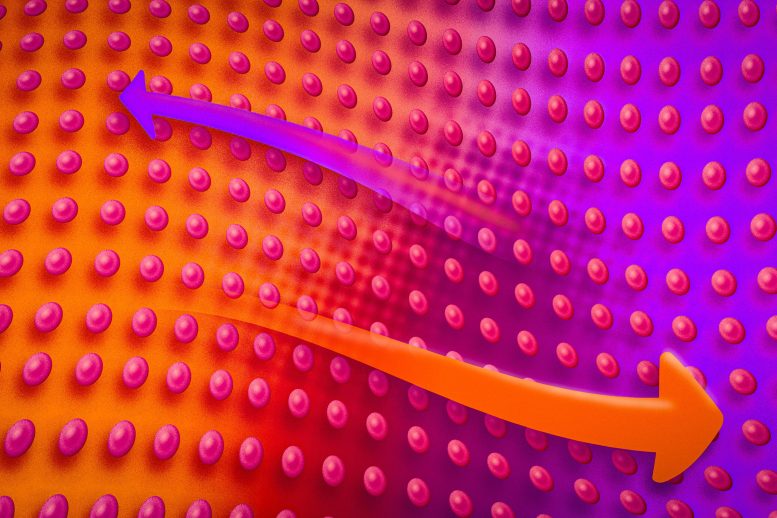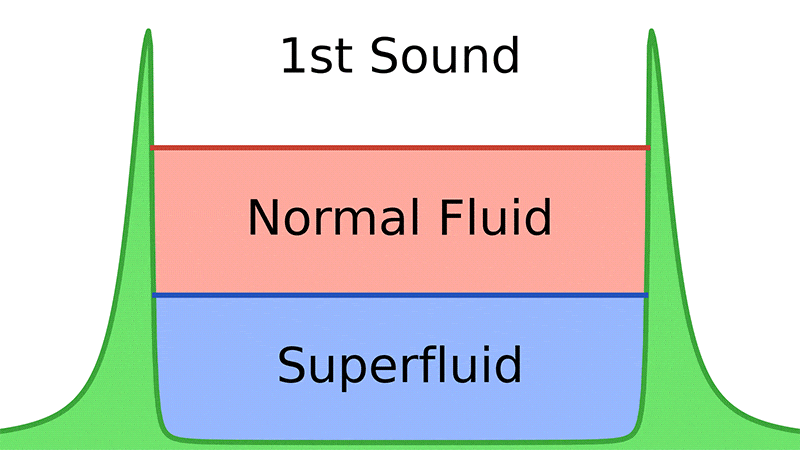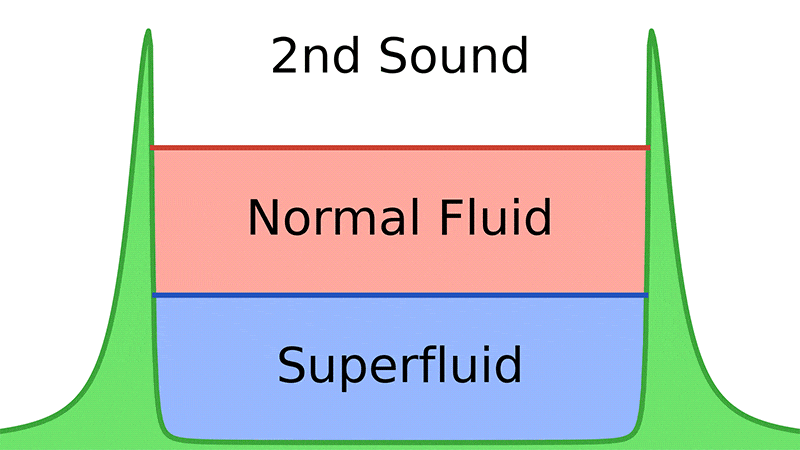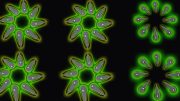
For the first time, MIT physicists have captured direct images of “second sound,” the movement of heat sloshing back and forth within a superfluid. The results will expand scientists’ understanding of heat flow in superconductors and neutron stars. Credit: Jose-Luis Olivares, MIT
MIT’s visualization of second sound opens new paths for understanding heat’s wave-like behavior in superfluids and its implications for various states of matter, expanding scientists’ understanding of heat flow in superconductors and neutron stars.
In most materials, heat prefers to scatter. If left alone, a hotspot will gradually fade as it warms its surroundings. But in rare states of matter, heat can behave as a wave, moving back and forth somewhat like a sound wave that bounces from one end of a room to the other. In fact, this wave-like heat is what physicists call “second sound.”
Signs of second sound have been observed in only a handful of materials. Now MIT physicists have captured direct images of second sound for the first time.
The new images reveal how heat can move like a wave, and “slosh” back and forth, even as a material’s physical matter may move in an entirely different way. The images capture the pure movement of heat, independent of a material’s particles.
“It’s as if you had a tank of water and made one half nearly boiling,” Assistant Professor Richard Fletcher offers as analogy. “If you then watched, the water itself might look totally calm, but suddenly the other side is hot, and then the other side is hot, and the heat goes back and forth, while the water looks totally still.”
Led by Martin Zwierlein, the Thomas A Frank Professor of Physics, the team visualized second sound in a superfluid — a special state of matter that is created when a cloud of atoms is cooled to extremely low temperatures, at which point the atoms begin to flow like a completely friction-free fluid. In this superfluid state, theorists have predicted that heat should also flow like a wave, though scientists had not been able to directly observe the phenomenon until now.

First sound, depicted in a simple animation, is ordinary sound in the form of density waves, in which normal fluid and superfluid oscillate together. Credit: Courtesy of the researchers

Second sound is the movement of heat, in which superfluid and normal fluid “slosh” against each other, while leaving the density constant. Credit: Courtesy of the researchers
The new results, reported recently in the journal Science, will help physicists get a more complete picture of how heat moves through superfluids and other related materials, including superconductors and neutron stars.
“There are strong connections between our puff of gas, which is a million times thinner than air, and the behavior of electrons in high-temperature superconductors, and even neutrons in ultradense neutron stars,” Zwierlein says. “Now we can probe pristinely the temperature response of our system, which teaches us about things that are very difficult to understand or even reach.”
Zwierlein and Fletcher’s co-authors on the study are first author and former physics graduate student Zhenjie Yan and former physics graduate students Parth Patel and Biswaroop Mukherjee, along with Chris Vale at Swinburne University of Technology in Melbourne, Australia. The MIT researchers are part of the MIT-Harvard Center for Ultracold Atoms (CUA).
Super Sound
When clouds of atoms are brought down to temperatures close to absolute zero, they can transition into rare states of matter. Zwierlein’s group at MIT is exploring the exotic phenomena that emerge among ultracold atoms, and specifically fermions — particles, such as electrons, that normally avoid each other.
Under certain conditions, however, fermions can be made to strongly interact and pair up. In this coupled state, fermions can flow in unconventional ways. For their latest experiments, the team employs fermionic lithium-6 atoms, which are trapped and cooled to nanokelvin temperatures.
In 1938, the physicist László Tisza proposed a two-fluid model for superfluidity — that a superfluid is actually a mixture of some normal, viscous fluid and a friction-free superfluid. This mixture of two fluids should allow for two types of sound, ordinary density waves and peculiar temperature waves, which physicist Lev Landau later named “second sound.”
Since a fluid transitions into a superfluid at a certain critical, ultracold temperature, the MIT team reasoned that the two types of fluid should also transport heat differently: In normal fluids, heat should dissipate as usual, whereas in a superfluid, it could move as a wave, similarly to sound.
“Second sound is the hallmark of superfluidity, but in ultracold gases so far you could only see it in this faint reflection of the density ripples that go along with it,” Zwierlein says. “The character of the heat wave could not be proven before.”
Tuning In
Zwierlein and his team sought to isolate and observe second sound, the wave-like movement of heat, independent of the physical motion of fermions in their superfluid. They did so by developing a new method of thermography — a heat-mapping technique. In conventional materials one would use infrared sensors to image heat sources.
But at ultracold temperatures, gases do not give off infrared radiation. Instead, the team developed a method to use radio frequency to “see” how heat moves through the superfluid. They found that the lithium-6 fermions resonate at different radio frequencies depending on their temperature: When the cloud is at warmer temperatures, and carries more normal liquid, it resonates at a higher frequency. Regions in the cloud that are colder resonate at a lower frequency.
The researchers applied the higher resonant radio frequency, which prompted any normal, “hot” fermions in the liquid to ring in response. The researchers then were able to zero in on the resonating fermions and track them over time to create “movies” that revealed heat’s pure motion — a sloshing back and forth, similar to waves of sound.
“For the first time, we can take pictures of this substance as we cool it through the critical temperature of superfluidity, and directly see how it transitions from being a normal fluid, where heat equilibrates boringly, to a superfluid where heat sloshes back and forth,” Zwierlein says.
The experiments mark the first time that scientists have been able to directly image second sound, and the pure motion of heat in a superfluid quantum gas. The researchers plan to extend their work to more precisely map heat’s behavior in other ultracold gases. Then, they say their findings can be scaled up to predict how heat flows in other strongly interacting materials, such as in high-temperature superconductors, and in neutron stars.
“Now we will be able to measure precisely the thermal conductivity in these systems, and hope to understand and design better systems,” Zwierlein concludes.
Reference: “Thermography of the superfluid transition in a strongly interacting Fermi gas” by Zhenjie Yan, Parth B. Patel, Biswaroop Mukherjee, Chris J. Vale, Richard J. Fletcher and Martin W. Zwierlein, 8 February 2024, Science.
DOI: 10.1126/science.adg3430
This work was supported by the National Science Foundation (NSF), the Air Force Office of Scientific Research, and the Vannevar Bush Faculty Fellowship. The MIT team is part of the MIT-Harvard Center for Ultracold Atoms (an NSF Physics Frontier Center) and affiliated with the MIT Department of Physics and the Research Laboratory of Electronics (RLE).









Be the first to comment on "Superfluid Surprise: MIT Physicists Capture Images of “Second Sound” for the First Time"